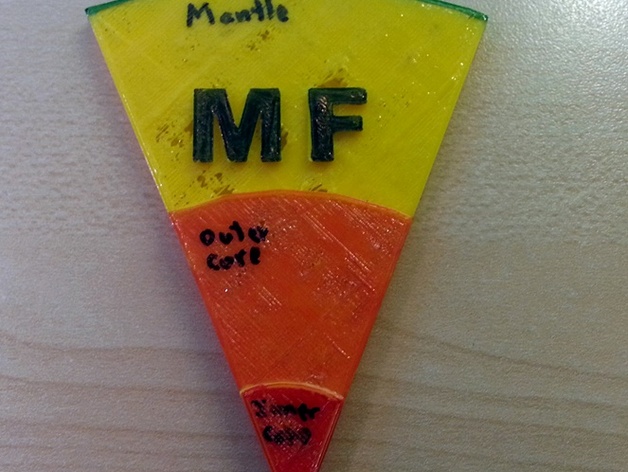
Scale Model of Earth's Layers
thingiverse
This is a project for a 5th grade earth science class that will be their first experience with 3D printing and Tinkercad. I hope to turnkey it and lead the lesson with one class, then have the teacher take over with her other class. The procedure uses most of the important actions on Tinkercad, such as moving, resizing, holes, grouping, and the adjust tool. To start, students will log in to their Tinkercad accounts and create a new project. They will then drag a cylinder onto the workplane and resize it to 1 mm in diameter and 10 mm tall, coloring it black to mark the center of the Earth. Next, they will add three more cylinders for the inner core, outer core, and mantle, using colors such as red, orange, and yellow. The cylinders do not need to be arranged yet, but students should remember their sizes: 30 mm in diameter and 5 mm tall for the inner core, 83 mm in diameter and 4 mm tall for the outer core, and 150 mm in diameter and 3 mm tall for the mantle. Once all four cylinders are created, students will select them by dragging a rectangle around them and then use the adjust tool to align them in the X and Y directions. This will create a rough approximation of the Earth's shape. To cut out a wedge from the Earth, students will drag two rectangles onto the workplane, one covering half of the Earth on each side. They will make holes in both rectangles by clicking on the "Hole" tool and then rotate them 22.5 degrees clockwise and counterclockwise to create a 45-degree wedge. Next, students will move the negative space rectangles into position so that they intersect at the center of the Earth, using the black center cylinder as a guide. This should leave about half of each rectangle still visible on one side of the Earth. Once in place, students can delete the black center cylinder and then group all the remaining pieces together by dragging a rectangle around them and clicking on the "Group" tool. This will create a wedge-shaped model of the layers of the Earth. The final step is to download and print the model in yellow, then color the inner and outer cores with a marker and add a thin border for the crust. Students can also add their initials by dragging letters onto the mantle. The result should be a 3D scale model of the Earth's layers that is accurate down to about 1 mm.
With this file you will be able to print Scale Model of Earth's Layers with your 3D printer. Click on the button and save the file on your computer to work, edit or customize your design. You can also find more 3D designs for printers on Scale Model of Earth's Layers.
